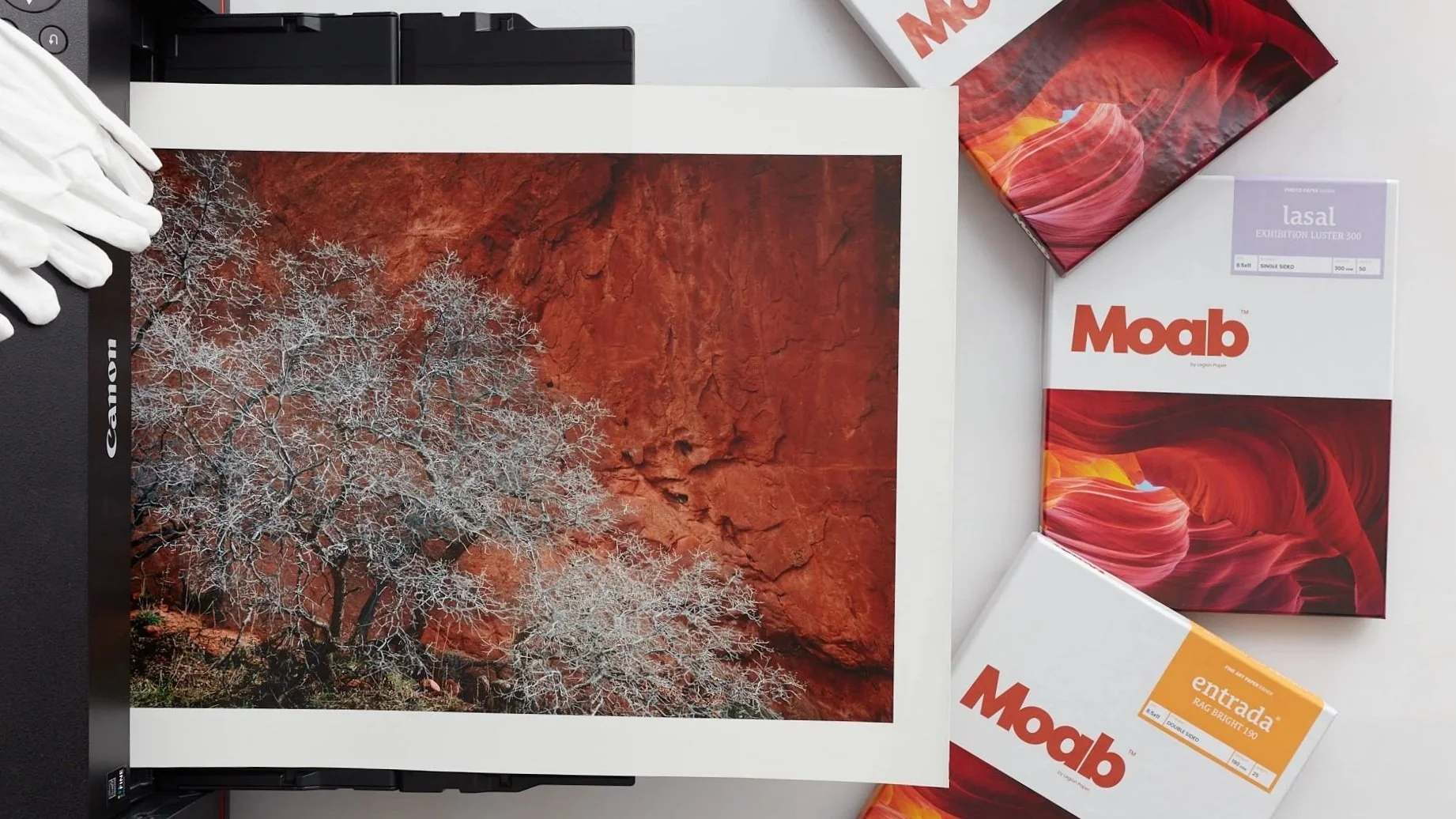By Les Picker
We recently completed a 3-day workshop for advanced amateur and professional photographers to help them create their first professional quality fine art portfolios. My hat is off to Norm Arnold, Jim Harris, Lew Rothman and Jeff Wagoner, who spent an intense few days focused on culling, critiquing, post-processing (again and again), printing, sorting, sequencing and finally assembling their art into a coherent and beautiful narrative.
By no means was this a laid back weekend. We started on Friday afternoon and finished on Sunday afternoon. But there was lots more to it than the face time we spent together. For two months prior to the workshop, these brave photographers submitted 50-70 images to us that they were considering for their portfolio. My assistant Bob and I offered our critique and suggestions and set a firm benchmark.They were to show up to the workshop with no more than 30 images!
As if that wasn’t agony enough, the goal at the workshop was to further cull their images to the 10-12 very best ones that would be printed at 13” x 19” for their portfolio. Whew!
As my very capable assistant, Bob Boyer, likes to emphasize, the production of the actual portfolio is really only a by-product of our Portfolio Development workshop. The real goal was to teach these talented photographers how to critically edit themselves, and how to reach out to others for editorial feedback. Self-editing is perhaps the most difficult part of assembling one’s representative work. I know that from my own experience and have heard that from colleagues and clients hundreds of times over the decades. Editing ourselves is something we must do constantly, whether for a portfolio, an exhibit, for our smart phone displays, or just for selecting our best images for showcasing on our desktops. Trouble is, most photographers do not do a good job of self-editing, so the primary goal of our Portfolio Development workshop is to teach those critical skills.
The Rubber Meets the Road
When it came time to actually print the final selections of images for these talented folks, we turned to our trusty pair of Canon Image Prograf 1000 printers. Believe it or not, we churned out 160 prints within 24 hours without a glitch. These workhorse printers are a real dream.
Still, where the rubber meets the road in fine art printing lies in the paper choices one makes, and in our experience nothing beats Moab fine art paper. Yes, Moab is one of our sponsors, but anyone who knows me understands that after five decades in photography I am not beholden to anyone. Bob and I chose Moab carefully after years of experimenting with every major (and some minor) manufacturers’ papers. Not that there aren’t some other fine brands out there - Canson and Hahnemuhle immediately come to mind - but Moab’s line is fine-tuned to the needs of fine art photographers.
Moab actively seeks feedback as they develop new papers. The perfect example of that is their newly released Entrada Textured Rag, which Bob and I are gaga over. Moab asked us, and several other of their Moab Masters, to beta test it last year. Frankly, some papers don’t make the grade and we credit Moab with abandoning those papers even after significant investment of time and money. But Entrada Textured Rag is definitely a winner. I’ll blog more on it soon.
Anyway, our portfolio clients chose to print on Moab’s Entrada Rag Bright, a matte paper, and on Moab’s Juniper Baryta, a semi-gloss. In all cases we chose the heavier weight options for the papers so they would stand up to frequent handling, since the intent of any portfolio is to showcase a photographer’s work to a wide audience.
So Why a Portfolio?
As I said above, a portfolio is a great way to showcase your work to potential clients, family, friends and fellow photographers. But it serves several other purposes that may not be quite so obvious, but just as important.
Portfolios are a wonderful way to group images together. For example, many photographers today create books and ebooks of their travels. In the same vein enterprising photographers create portfolios of fine art prints of those same travels. Some photographers will have those portfolios lined up in their bookcases, ready to exhibit when needed.
Portfolios are a Zen experience as much for your audience as they are for yourself. People who look at smartphone images swipe through them at blazing speed, rarely spending more than a few seconds on each. But hand a person a fine art print and you’ll see them examining it for details, admiring the way the scene is rendered, and even enjoying the tactile sensation of the luscious papers. There is nothing quite like handling a fine art print, one that WOWS! your audience.
But, perhaps the major reason for committing to doing a portfolio is the self-discipline it teaches you about editing, post-processing and finally, printing. When real estate is precious, one tends to take a great amount of time and great care in the selection process. A decent portfolio does not seek to drown the viewer in images. Instead, that critical self-discipline results in a highly select group of perhaps 10-15 of the best images the photographer can put together at that time. It is not a quantity contest, but rather a quality presentation that says to the world, this is who I am as a photographer at this moment. And the beauty of the portfolio is that prints can be swapped out at any time as taste and experience dictate.
From our perspective the Fine Art Portfolio Development was a huge success. But we’ll let one of our clients sum it up for us in an email we received after the event.





